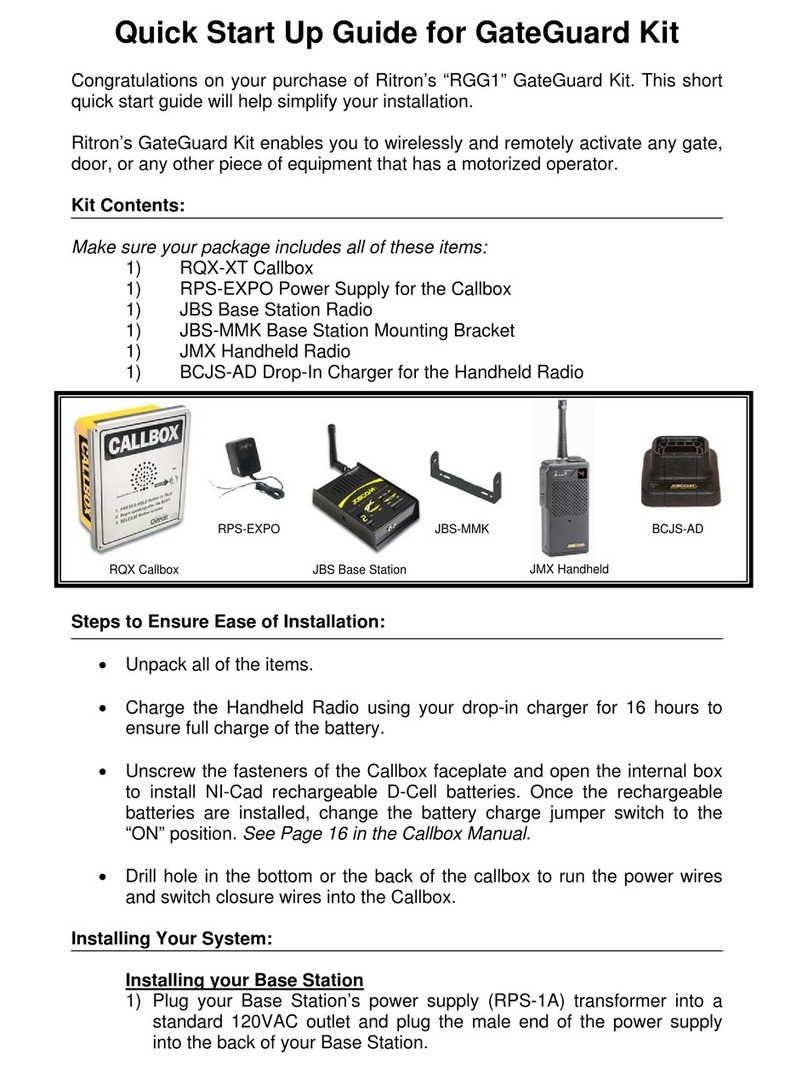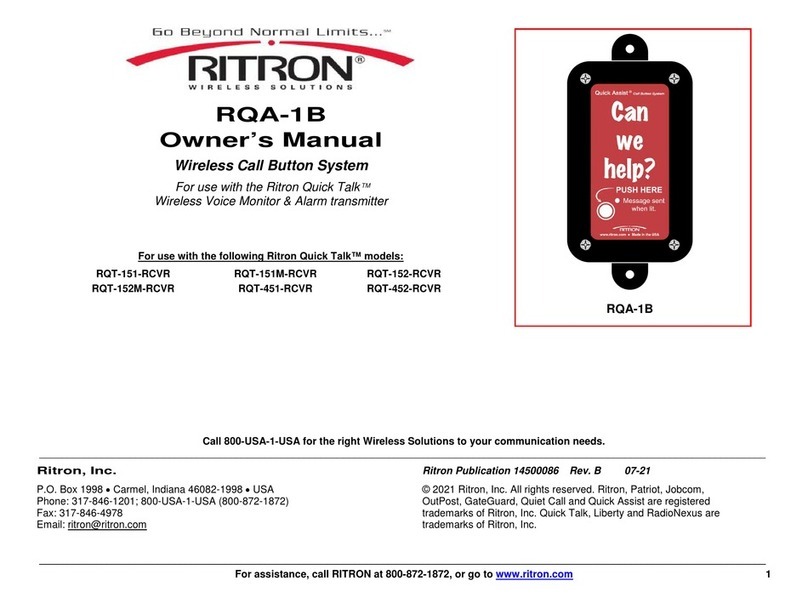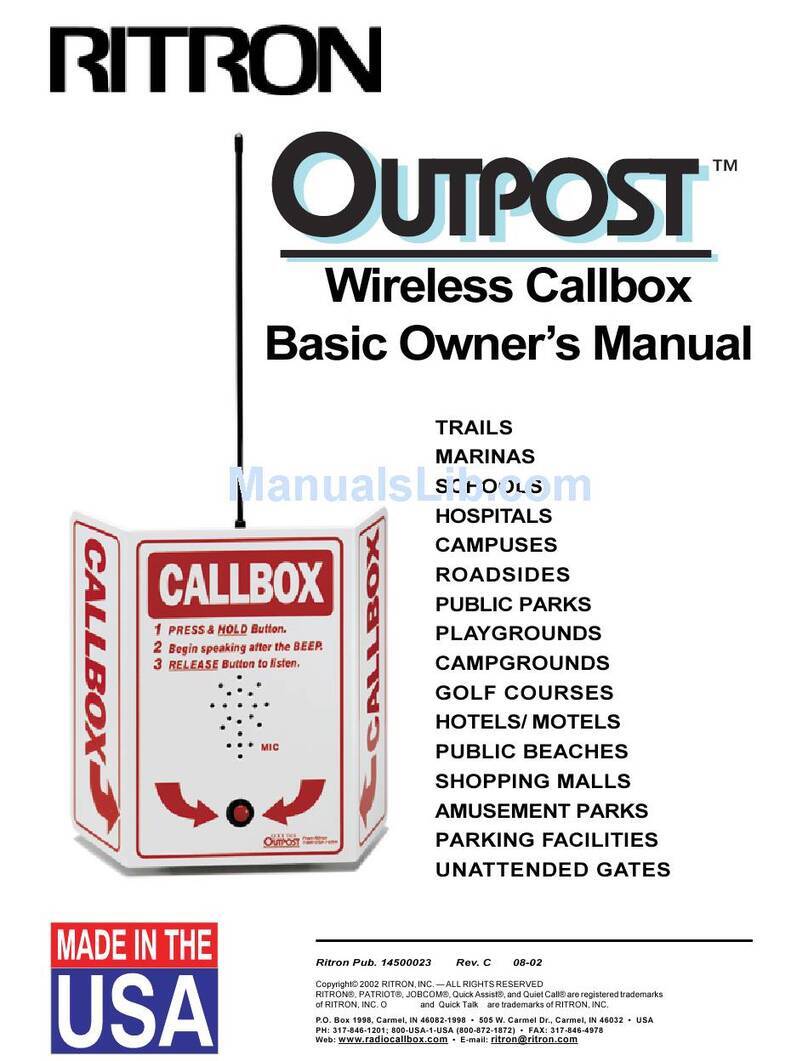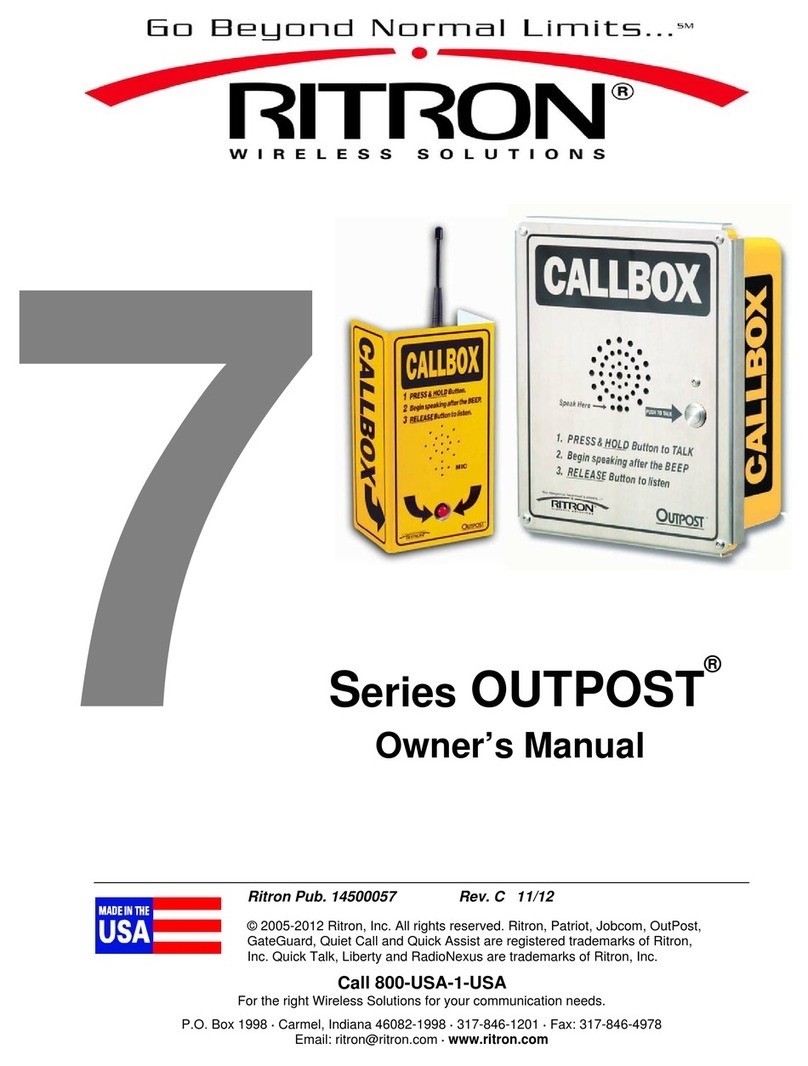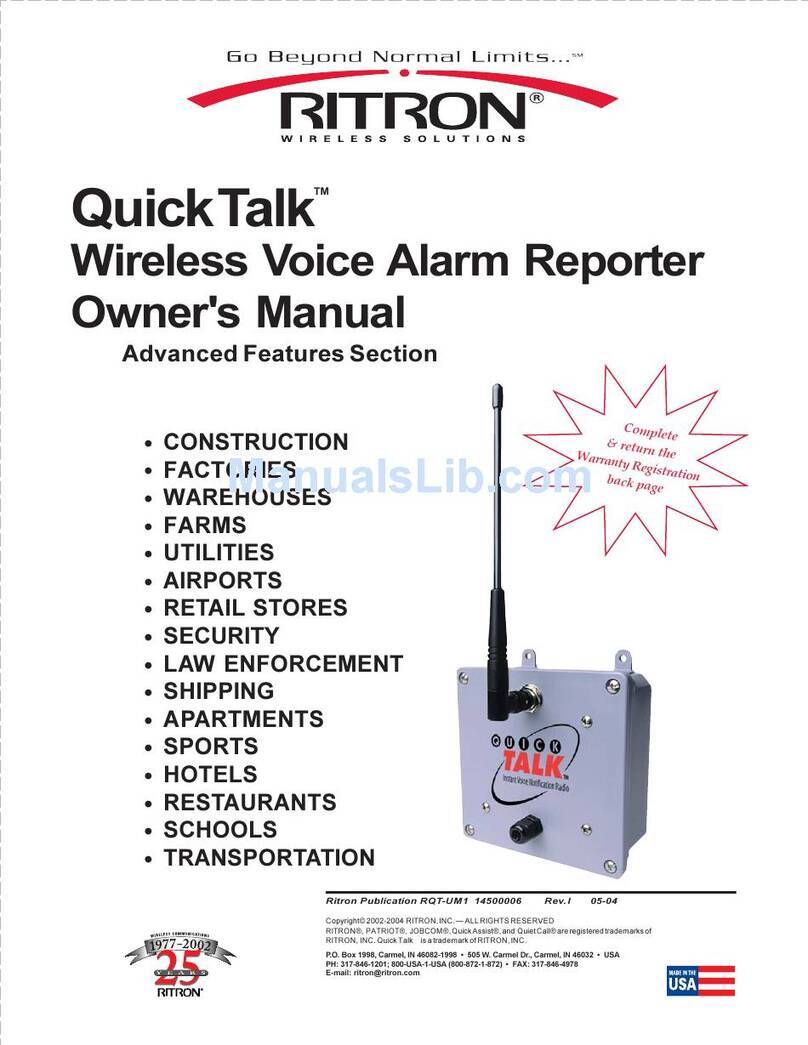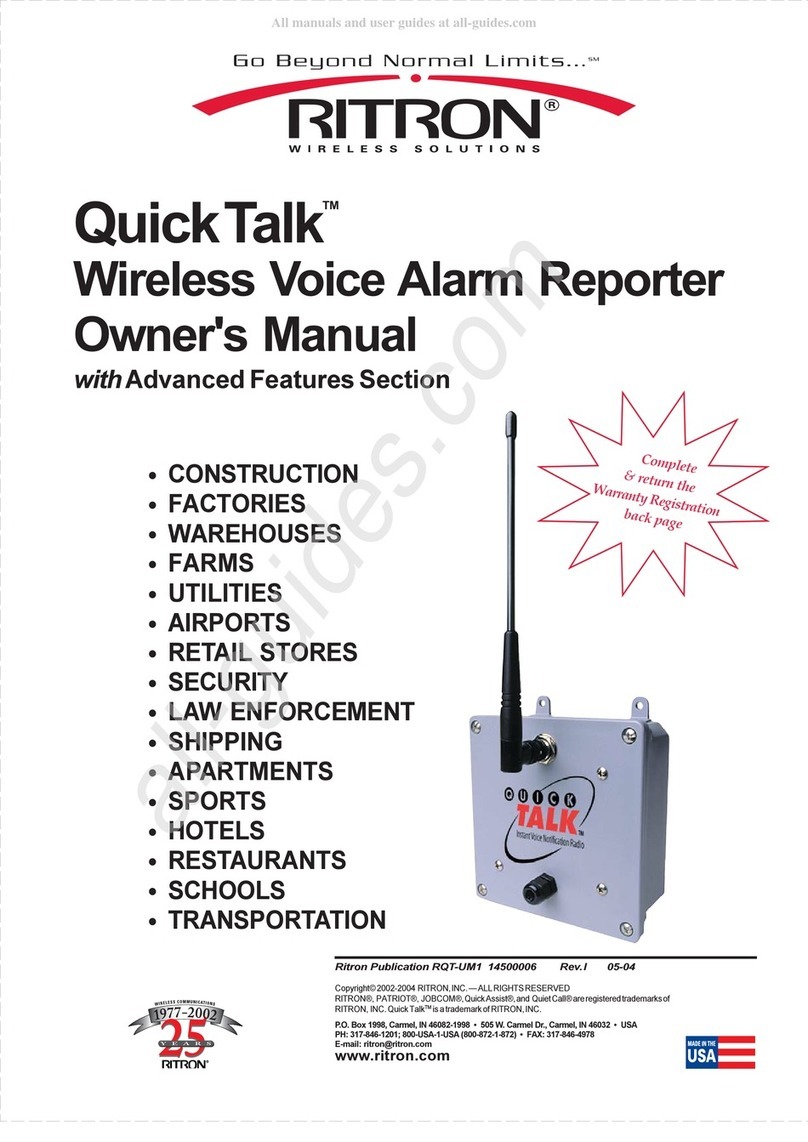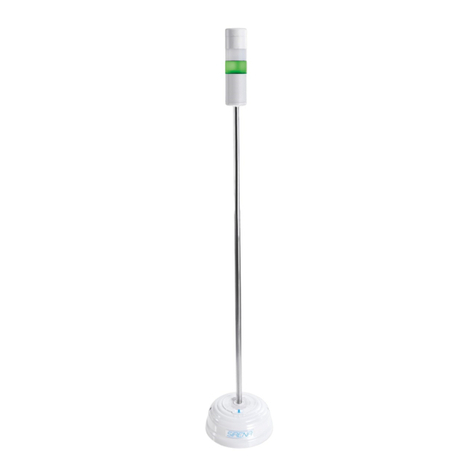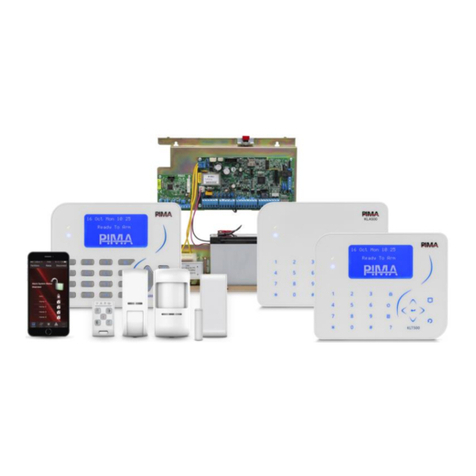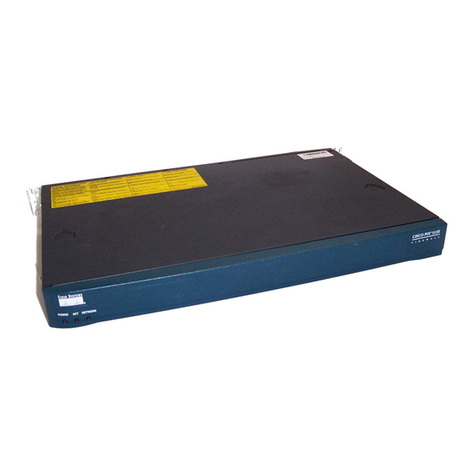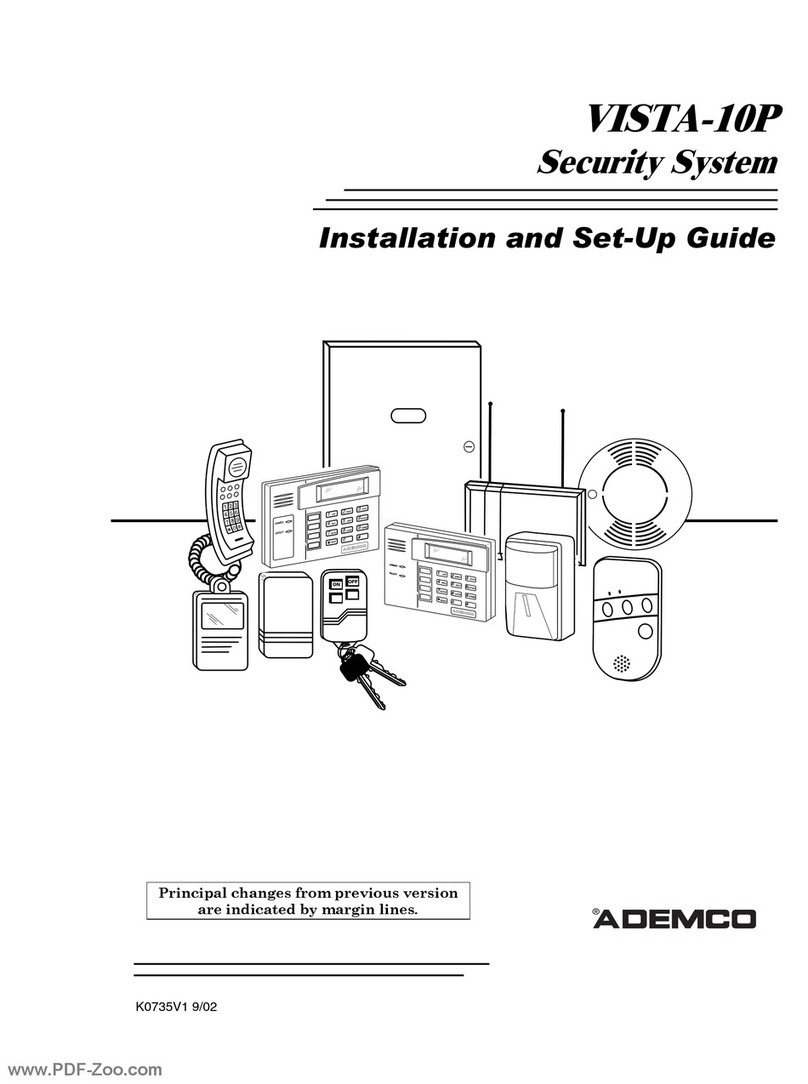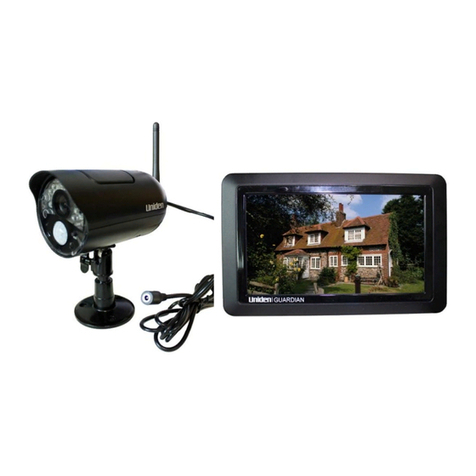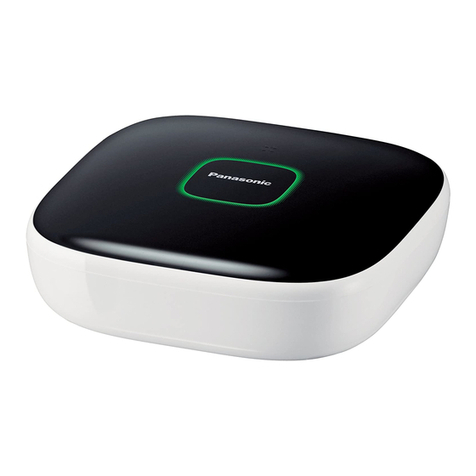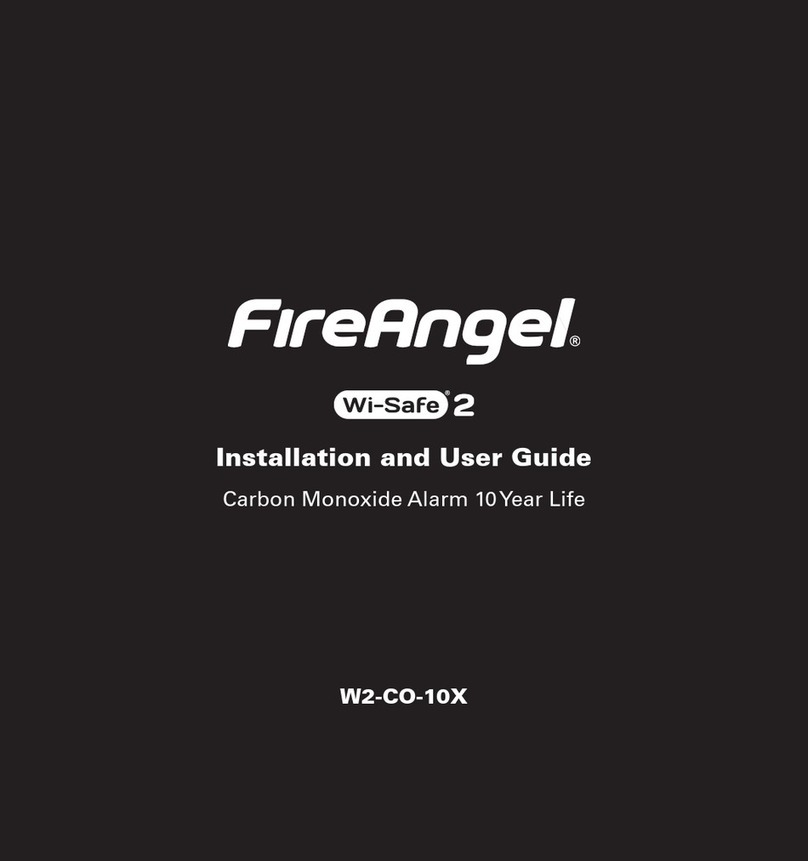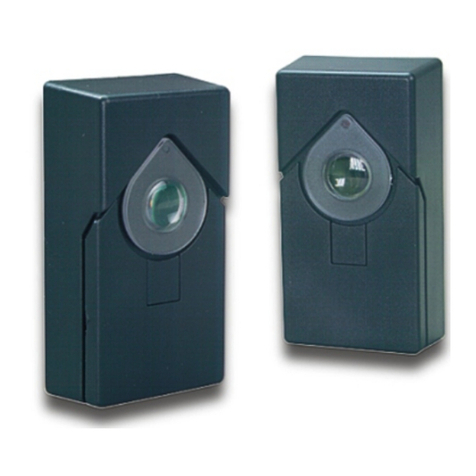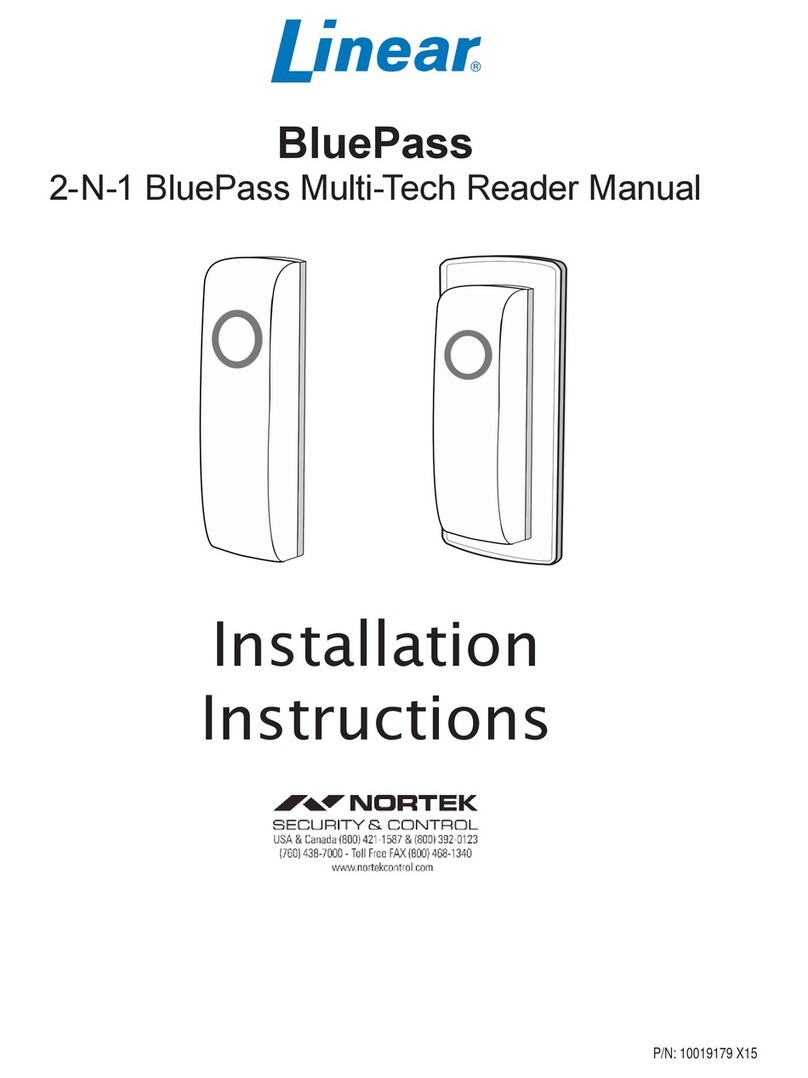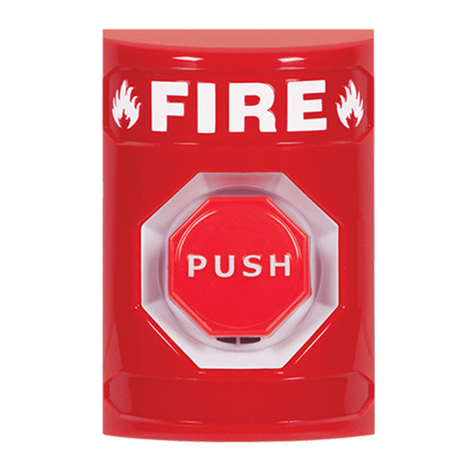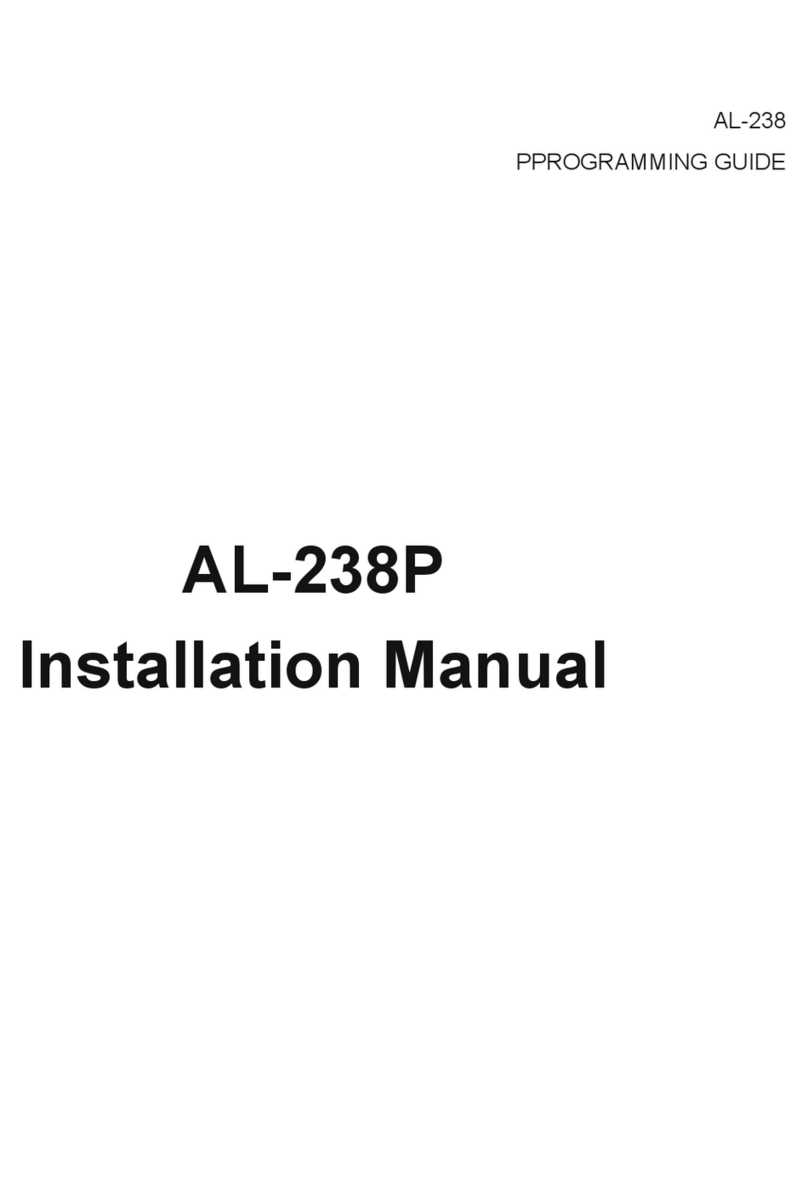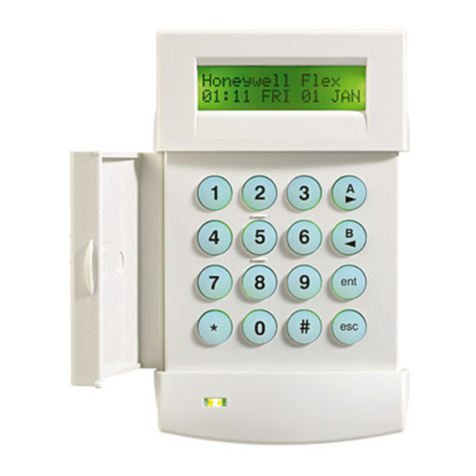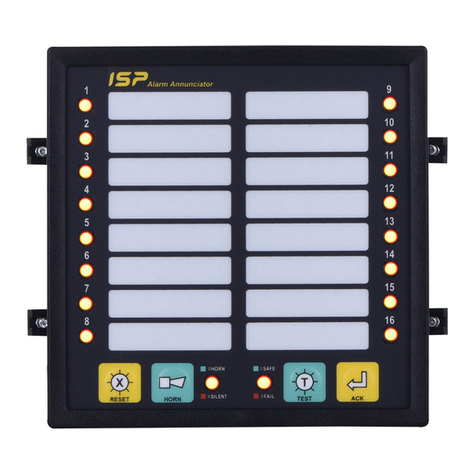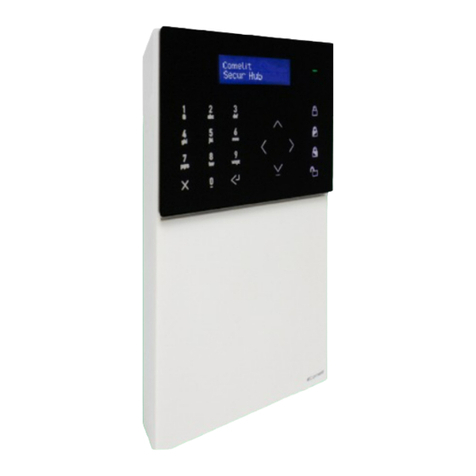
For assistance, call RITRON at 800-872-1872, or go to www.ritron.com 1
ABOUT THE QUICK TALKTM WIRELESS VOICE MONITOR &ALARM.......................................................................
General Information
The Quick TaIkTM is a wireless radio transmitter that
reports changes in the status of switches by
transmitting user-recorded voice messages to two-way
mobile, portable or base station radios. Quick TalkTM
transmits your voice message when the switch change
occurs, and at intervals you select.
Because you provide and connect the switches, your
Quick TalkTM units can report on the status of intrusion,
tampering, equipment malfunction, liquid levels,
machinery, pressure, temperature, power, smoke or
leakage.
The Quick TalkTM is easily programmed to transmit on
either an existing or a new radio frequency, with the
most popular sub-audible coded squelch formats, such
as Quiet Call®or Digital Quiet CallTM. This enables all
your personnel with JOBCOM®, PATRIOT®, or
equivalent two- way radios to hear the voice messages
instantly, and to be advised of the current condition of
each monitored location or device.
Quick TalkTM is housed in a weather-resistant
enclosure, so it can be installed in a wide variety of
indoor and outdoor locations. Because six internal AA
Alkaline batteries will power the unit for about a year,
Quick TalkTM does not require AC line power.
Quick TalkTM Models and Frequencies
There are three Quick TalkTM models, one for each of
the most popular professional radio communications
bands. The model number appears on a label on the
front of the case, and on a second label inside the case.
MODEL BAND FREQUENCY RANGE
RQT-151 VHF-FM 150 to 165 MHz
RQT-151M VHF-FM 151.820, 151.880, 151.940,
154.570, 154.600 MHz
RQT-451 UHF-FM 450 to 470 MHz
Ritron manufactures mobile, portable and base station
two-way radios and repeaters for use with Quick TalkTM.
Ritron pioneered the use of Color Dots on radios to
identify frequencies.
Factory-programmed, default Quick TalkTM frequencies
are:
Red Dot = 151.625 MHz for RQT-151
Green Dot = 154.600 MHz for RQT-151M
Blue Star = 467.925 MHz for RQT-451
See page 4 for instructions on changing the Quick
TalkTM transmit frequency to match an existing radio
system.
PLEASE NOTE THE FOLLOWING WITH REGARD TO RF EXPOSURE FOR THIS PRODUCT .........................................
EXPOSURE TO RADIO FREQUENCY ENERGY:
RQA-151, RQA-151M, RQA-451: This product generates
radio frequency (RF) energy when the button on the front
of the unit is depressed. This product has been
evaluated for compliance with the maximum permissible
exposure limits for RF energy at the maximum power
rating of the unit when using antennas available from
RITRON.
RQT-151, RQT-151M, RQT-451: This product generates
radio frequency (RF) energy when the state of any of the
four inputs has been changed. This product has been
evaluated for compliance with the maximum permissible
exposure limits for RF energy at the maximum power
rating of the unit when using antennas available from
RITRON.
For both the AFB-1545 and the standard internal
antennas, at the 20 cm (7.9 inches) minimum expected
separation distance and greater, the maximum RF
exposure is well below the General Population /
Uncontrolled limits. Antennas other than those available
from RITRON have not been tested for compliance and
may or may not meet the exposure limits at the distances
given. Higher gain antennas are capable of generating
higher fields in the strongest part of their field and would,
therefore, require a greater separation from the antenna.
This product is not to be used by the general public in an
uncontrolled environment unless compliance with the
Uncontrolled / General Population limits for RF exposure
can be assured.
To limit exposure to RF energy to levels below the
limit, please observe the following:
• Use only the antenna(s) available from RITRON
for these models. DO NOT operate the radio
without an antenna.
• DO NOT activate the transmitter when not actually
wishing to transmit. These radios transmit
recorded messages of a pre-determined length to
prevent continuous transmit times.
• When transmitting, make certain that the distance
limits for the particular model in use are observed.
• DO NOT allow children to operate the radio.
When used as directed, this series of radios is
designed to comply with the FCC’s RF exposure limits
for “Uncontrolled/General Population”. In addition,
they are designed to comply with the following
Standards and Guidelines:
• United States Federal Communications
Commission, Code of Federal Regulations; 47
CFR §§ 2 sub-part J.
• American National Standards Institute (ANSI) /
Institute of Electrical and Electronic Engineers
(IEEE) C95. 1-1992.
• Institute of Electrical and Electronic Engineers
(IEEE) C95.1-1999 Edition.
Copyright Telecommunications Industry Association




















